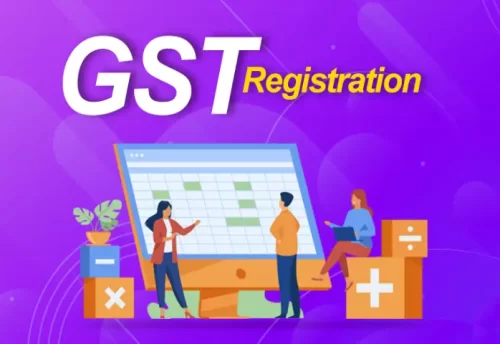
- 01/11/2025
- MyFinanceGyan
- 208 Views
- 0 Likes
- GST, Tax
GST 2.0 in India: Everything You Need to Know About the New Tax Regime
The Indian taxation system is set for a major transformation with the introduction of GST 2.0 in India. Since its launch in 2017, the Goods and Services Tax (GST) has been one of the most significant tax reforms in Indian history. However, as the economy evolves, the government has recognized the need to upgrade the system.
The new GST 2.0 aims to simplify compliance, improve transparency, and make taxation more efficient for both businesses and consumers. As per recent GST reforms in India, several changes—such as new GST rates, simplified filing procedures, and enhanced digital systems—are expected to roll out soon. At My Finance Gyan, we bring you the latest updates, expert insights, and clear explanations on the GST 2.0 implementation date, reforms, and expected impact.
What is GST 2.0?
GST 2.0 in India represents the next phase of the GST framework — an evolved version designed to correct loopholes, expand coverage, and enhance compliance. It’s not just a GST revision, but a complete India GST reform aimed at improving the ease of doing business.
Under GST 2.0, the focus is on automation, digitalization, and real-time tax tracking. The system will bring in new GST slabs, improved invoice-matching, and a simpler return filing process. According to the government’s GST reforms 2025 roadmap, this upgrade is part of India’s vision to make tax compliance seamless and more inclusive.
Key Features of GST 2.0:
Here are the major highlights of the upcoming GST 2.0 in India:
- Simplified Return Filing: The return filing process under GST 2.0 will be faster and easier. Businesses will be able to file consolidated returns through a single dashboard. The new design aims to reduce manual intervention and errors.
- Revised GST Rates and Slabs: The government plans to introduce new GST slabs to rationalize the tax structure. The GST new rate list may include changes to essential and luxury goods, with new GST rates applicable from the upcoming financial year. Businesses should closely follow the GST slab change news to stay compliant.
- Enhanced Digital Infrastructure: With GST 2.0 implementation, the GSTN (Goods and Services Tax Network) will see upgraded technology for faster data validation, real-time analytics, and AI-driven compliance tracking.
- Wider Tax Base: The GST expansion will bring more sectors and small businesses under its umbrella. This expanded GST move will improve tax collection and reduce revenue leakage.
- Improved Input Tax Credit (ITC) System: The new GST 2.0 will simplify the ITC claim process with automated invoice-matching and fewer mismatches. This ensures that taxpayers get their due credits without unnecessary delays.
- Stronger Compliance and Monitoring: With AI-powered analytics and integration with e-invoicing, the GST reforms in India are expected to curb fake invoicing and improve transparency.
Benefits of GST 2.0:
The new GST reforms are designed to benefit businesses, consumers, and the government alike.
For Businesses:
- Easier compliance and fewer return forms.
- Reduced errors due to automated filing and reconciliation.
- Predictable GST rate revision cycles for better planning.
For Consumers:
- Fairer pricing through new GST rates and rationalized slabs.
- Possible GST rate cut in India on essential goods.
- More transparency in product pricing.
For the Government:
- Broader tax base due to GST expansion.
- Efficient monitoring with digital tools.
- Better tax collection and revenue stability.
Impact of GST 2.0 on Businesses:
The upcoming GST 2.0 in India will significantly affect how businesses operate. Small and medium enterprises (SMEs) will find the compliance process more automated. The GST new updates will bring an integrated portal for registration, filing, and refunds. For larger companies, the revised GST rates and the new GST implementation date will require adjustments in pricing and accounting systems.
The GST bill amendment is also expected to address several long-standing industry demands, such as faster refund processing and simplified audit procedures. In short, while the transition may involve initial adaptation challenges, GST 2.0 will ultimately reduce compliance costs and boost business confidence in the long run.
How to File GST Returns Under GST 2.0?
The government plans to launch a unified and user-friendly return filing system as part of the GST 2.0 implementation. Here’s what you can expect:
- Single Monthly Return: Taxpayers will file a single return consolidating sales, purchases, and ITC details.
- Auto-populated Data: Invoice details will be auto-filled using e-invoicing data.
- Smart Reconciliation: The system will use AI tools for automatic matching of transactions.
- Simplified Dashboard: The interface will show pending tasks, return status, and ITC summary in one view.
- Faster Refunds: Automated refund processing will ensure timely credit to taxpayers.
If you are wondering when new GST rates will be applicable, the new GST implementation date and GST applicable date will be announced after the next GST meeting date in 2025.
Common Challenges with GST 2.0:
While GST 2.0 in India brings several advantages, it may also pose short-term challenges:
- Businesses will need time to adapt to the new GST rules changes in India.
- Accounting software may require updates for revised GST rates.
- Small traders may face initial confusion about the new GST rates applicable from which date.
- Industry experts expect minor hiccups as the GST reforms in India roll begins.
However, these challenges are short-lived and part of India’s journey toward a more efficient gst tax reform india 2025 framework.
Conclusion:
The GST 2.0 in India marks a bold step toward a more transparent, efficient, and business-friendly tax system. It’s a major gst reform in india designed to simplify compliance, promote fairness, and strengthen the economy. At My Finance Gyan, we continuously bring you the latest gst new updates, analysis of gst reforms 2025, and insights on gst rate revision and gst slab updates to keep you informed.
For taxation or legal assistance regarding GST registration, return filing, or business conversion, it’s best to consult experts. For professional legal help, choose Startup Portal Business Services, your trusted partner for legal and compliance support. Stay tuned with My Finance Gyan for regular updates on GST 2.0 implementation date, new gst reforms, and gst rate cut in india news.
Frequently Asked Questions (FAQ's):
GST 2.0 in India is the upgraded version of the current GST system, focusing on automation, simplified filing, and revised tax slabs.
The new GST rates applicable from which date will be officially announced after the GST meeting date 2025.
The GST reforms 2025 include simplified returns, new GST slabs, digitalisation of compliance, and improved ITC matching.
The government aims for a balanced gst rate revision, which may include a gst rate cut in india for essential goods.
You can check the latest gst new rate list and gst slab updates on the official GST portal and through My Finance Gyan updates.



